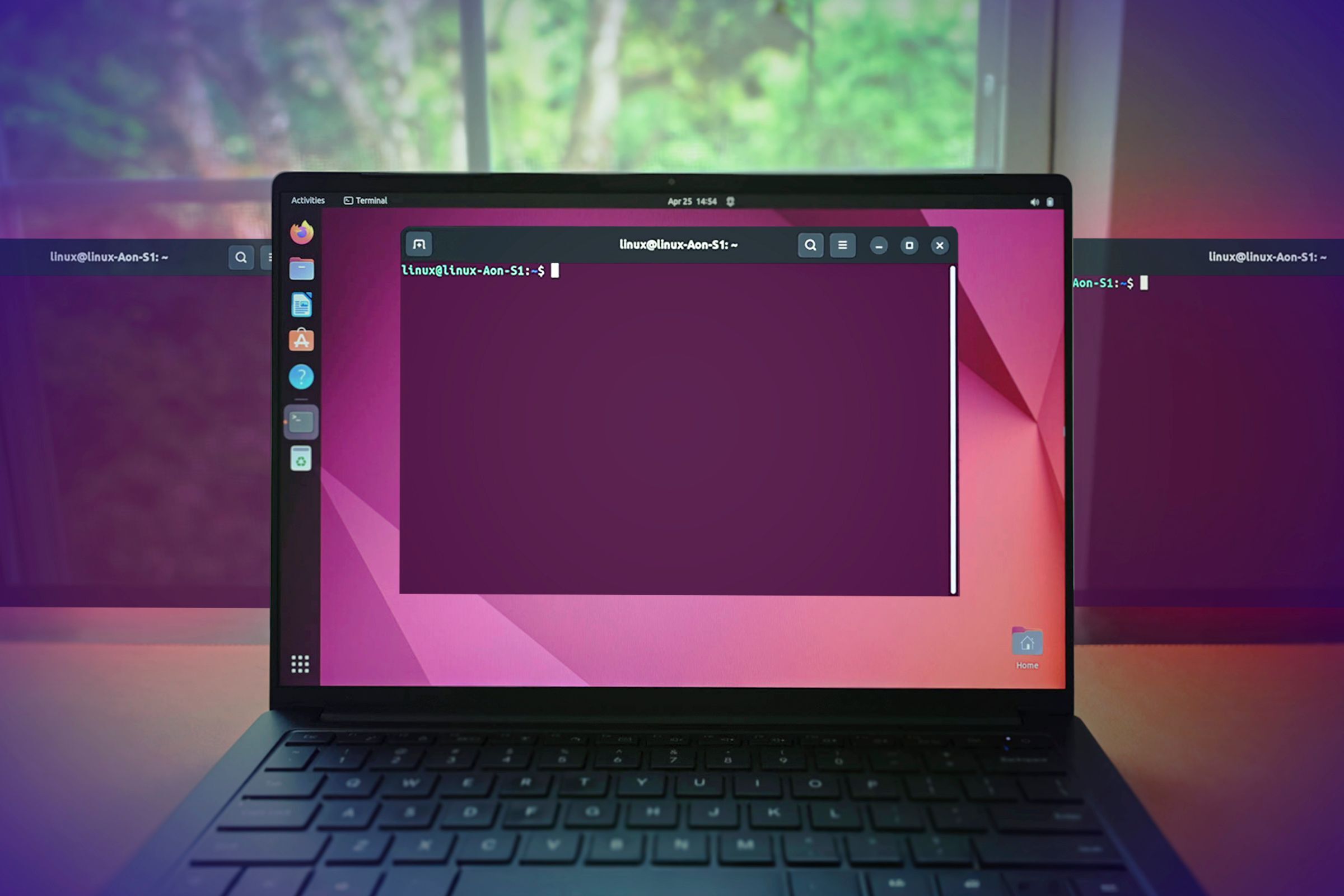I’ve been daily driving Linux Mint for 10 years now. The answer to this question is “for what most people consider everyday usage, you have to use the Linux terminal about as often as you have to edit the Windows registry.” And in fact over the 10 years I’ve been a Linux user, GUI tools in Linux are increasingly available, and I’ve heard Windows normies talking about the registry more.
When I started out, Mint shipped with Synaptic Package Manager, and a lot of distros didn’t include a GUI at all. Now GUI package managers are the rule rather than the exception and most have bespoke polished app store -like things. You of course can still use apt or dnf or pacman or whatever, but you decreasingly have to.
I never once touched the registry on my Win 98, Win XP, Win Vista or Win 7 machines. Win 8 required a couple registry keys to turn off that…curtain that you had to click away to get to the login screen? and a few other “tablet first” features Win 8 had, and now I hear “just go and add these registry keys to put the start menu on the left, turn off ads, re-enable right click and retract the rectal thermometer.”
Linux is becoming more normie friendly while Windows is genuinely becoming less normie friendly.
The author argues that you don’t need to use the terminal but constantly argues that you should. The average computer user doesn’t even know which version of Windows they’re using. Many don’t even know if they’re using Windows or Mac. Until Linux gets over the obsession with the terminal we’re never going to have the year of Linux.
If you want a non-terminal os based on linux you just have to make something like android or chromeos or steamdeckos.
Those are and pretty popular, so I don’t know who can claim linux is “terminal obsessed” it’s just a kernel and there is a wide diversity of os based on it.Debian , fedora , suse etc might all be “obsessed” with the terminal.
For me that’s just the obvious economical way to offer features. decent GUI costs a lot more to develop and document - so you have to have less features for a given amount of dev time. Or you have google /valve/microsoft type amounts of resources to spend.I always thought this “year of linux” thing was a meme to make fun of canonical or idiotic tech journalists .
Is anyone realitsitcally interested in volunteering their time to win over legions of Microsoft fanboys. Fuck me sounds like hell.And frankly the use of terminal is going to be far from the first blocker to linux adoption for those who don’t even know they’re using windows or mac.
I disagree. Many people like to have control over there computer even if they don’t want to learn a bunch of new skills.
Linux isn’t for everyone but its gotten to the point where someone could figure it out if they so choose. It no longer is the unstable mess it was 10-20 years ago.
I agree with the author then.
What’s wrong with using the cli? People act like it’s some arcane dark magic…
You’re typing things in a small box here rather than clicking on icons to reply. Sometimes text is just better.
The problem with the cli is you need to memorize a whole bunch of new words and syntax in order to do anything. You also need to memorize what not to do so you don’t accidentally erase your system while using rm or cp or whatever.
Even something as simple as copying and pasting, which works the same in every single other program has new rules in the terminal. I mean, think about that. If you’re just learning bash, then the first thing you’ll be doing is copy pasting commands. But even that has the hurdle of 'oh, I guess this is the one program where ctrl-c means something else
Like, how do you look at sudo, cat, man, and apt, and think ‘yeah that’s intuitive’. And forget about multitasking, new users won’t even know how to quit most programs (is it ctrl-q? Just q? Esc? Ctrl-c? Ctrl-d? Wait how do I undo that, is it ctrl-z? Wait where did the thing go
You know not everyone likes to read a wall of text. Some people prefer watching a video than reading an article. So some people just like to use GUI than CLI, and that’s fine.
In my firs time with linux I install ubuntu (maybe 12.04, I dont’t remember, it was gnome 2) in the only PC in my parents home, I delete windows, and we was using it 2 years without knowing what is a terminal and everything went fine, the problems appeard when I was discover the terminal hahahaha
Of course.
But why would you want to!?
Dyslexia!
Dislexia* /j
Yes, my mom does.
Mine, too!
Just use openSuse. With Tumblweed you even get a a rolling distro that does not require any terminal use.
Opensuse more like opensus
Seriously though wasn’t suse the one you aren’t suppost use in the enterprise due to security issues?
I did not hear about that yet and a quick DDgo didn’t gave me results… Where did you hear that, or do you know more? Call me interested 😇
I honestly don’t quite remember. I heard it from someone who was doing government work at the time. I think it had to do with security issues with rancher.
Kinda disappointing.
The article is really trying to sell us, the reader, that using Linux without knowing how to use the command line is not only possible but totally feasible. Unfortunately, after each paragraph that expresses that sentiment we are treated to up to several paragraphs on how it’s totally easier, faster, and more powerful to do things via thé command line, and hey did you know that more people like coding on Linux than windows? Did you know you can do more powerful things with bash, awk, and sed than you ever could in a file manager?!
FFS
vimandnanoare brought up and vim’s “shortcuts” are praised… in an article on how you can totally use Linux through a gui and never need to open up the command line.Who is this written for? outside of people who not only already use Linux but are convinced that using any other OS is both a moral failing and a form of self-harm?
It is for the sake of combatting the commonly held belief that you can’t do anything without the terminal in Linux.
Progress on the accessiblility, and GUI centric applications and functionality in Linux has been huge in the last decade or two. It is now entirely possible to use a Linux system while rarely needing the terminal. And if you have someone techy helping set it up for you then it is possible to never have to.
For clarity’s sake: I have been daily driving Linux, specifically ArchLinux, for the past 9 years, across a rotation of laptop and desktop computers. I do almost everything in the command line and prefer it that way.
I still think if you want people to try Linux you need to chill the fuck out on getting them to use the command line. At the very least, until they’re actually interested in using Linux on their own.
I think tools like YaST help to save time, instead of editing the bootloader in config files, you can simply enter, search for “Boot Loader” and edit there, be following a tutorial or official documentation. I sometimes prefer to use YaST just so I don’t do things wrong. it’s like the old Control Panel in Windows.
To all the people pointing the many inconsistencies of Linux/specific distros, I recommend The Unix Haters’ Handbook
For me, the terminal is something I’ll learn once I’m more familiar with which apps I like. Until then, it’s nice to have something like pamac to help me find the thing I need.
Yes you can but why would you not use the terminal. It’s bloody handy.
Eh, you really can’t. Linux without the terminal only enables about 5% of the functionality available the user.
Linux geeks like to imagine a hypothetical “average user” who never needs to adjust settings or install anything beyond a web browser. But a person looking for that limited of functionality while also knowing how to install an operating system is not an average user.
I disagree. I’ve used KDE’s discover thingy to install stuff basically through dnf on fedora. It’s incredibly possible for the average user, who basically just browses the web and maybe writes documents.
Even basic things in distros are quite different, for example the frontend for settings, so tech support threads will show how to do it in the backend. Oh well, but then there’s someone who suggests
sudo nano /etc/default/grubIf you’re a noob, run this and get a “nano: command not found” error, you’ll google it and learn to resolve it using
apt. However, Manjaro’s package manager ispacmanbut you don’t know, so you installaptusing a weird guide without knowing what it even is. The next update then wreaks havoc on your system.My first install ended in a dependency hell because of this.
Well no one in there right mind should use Manjaro so that was mistake no. 1
Why, what is the problem with Manjaro in respect to other distros and would imply someone is mentally impaired to use it?
TL;DR, ddosing AUR multiple times, poorly maintained certificates, and a generally bad take on Arch that causes lots of problems for the uninitiated.
People aren’t mentally impaired because they use Manjaro. However, Manjaro is problematic as a distro and should be avoided if possible.
The recommendations seemed favorable when I tried it. I have since switched to Mint.
That’s probably for the best. If Manjaro was a little more honest and straight forward I wouldn’t have an issue. The problem is that they say they are kind ignorant of there mistakes.
Honestly they could ask for help and the community would step up.
Although shaming newcomers for their distro choice is not a welcoming move 💢
True, the blame is on those who recommend it
You can use Linux without a terminal, but life is so much easier to just remember few letters (command) and pressing enter instead remembering 200 places where a setting is. You can also always just do
sudo pacman --help.Strong disagree lol but I understand your logic. I am a visual learner and it is a lot easier for me to understand what the structure and options are in a given program when I have a GUI.
To me the terminal feels like a scalpel. It’s a precise instrument, but only you need to know exactly what you’re slicing into.
I am a gui only user. AMA. I have to use command line occasionally but it’s less than once a month, if that. Im on EndeavourOS desktop for over 2 years with Bauh managing updates. My home server runs Unraid with a web GUI interface maybe used CLI twice in 5 years? They told me Linux could be what I wanted it to be. I don’t want to use command line, so I don’t!
Endeavour is a great example for gui only users for sure.
On the rare occasions you need to use a terminal, how often is it for something completely new? Something you need to look up to understand?
Also, how often is the MAN page enough lookup, without having to sift through 17 sites than are describing subtly different things?
I find the documentation to be very good for Arch based distros. The EOS forums or Archlinux.org wiki almost always has what I need. Otherwise the github page usually has Arch install directions that are very clear. The major things I’ve had to do in terminal is just initial set up of applications, enabling things to run on startup or changing configs. For example, and this is the most complicated example I can think of. I use grub-btrfs to put my Timeshift snapshots into the grub menu. All I really had to do was 3 commands:
sudo systemctl start grub-btrfsd
sudo systemctl enable grub-btrfsd
sudo systemctl edit --full grub-btrfsd
The first two commands start the daemon and set it to run on start up, the 3rd command is editing the config so I could use Timeshift over Snapper. Again this is the most complicated example I can think of and its 3 lines. Not only that but I was able to find documentation on two different sites. In under a minute of googling.
I’m sure you could but why? Terminal is so useful. Am I out of touch?
I have a theory that the crowd of people who learned computers or iPads etc from GUIs only, they have a harder time with terminal. Those who used DOS a lot find it to be a happy space.
I don’t think it’s a theory rather than an objective fact. A lot of “traditional” computer skills have almost totally gone extinct because consumer devices are designed to hide as many system features from you as possible.
The saving grace is that even being raised without it, you end up needing these skills to become a developer of any decent calibre. That gives at least some route for these skills to transfer to new generations.
That is not necessarily true
Microsoft is one of if not the biggest and richest companies in the world and they got that way on a strategy based on the public’s fear and hatred of reading comprehension.
In your opinion what makes a terminal program “more useful” than a GUI program with the exact same functionality? Genuinely curious because it’s a perspective I cannot wrap my brain around lol
The flaw is in the question: terminal apps practically always include more functionality especially for batch processing and automation of tasks.
I’ll give an example: Find me a GUI application that can quickly convert a gigabyte of .doc files into .pdf format. Pandoc can do that with a single command.
Also: You’re probably comparing the process of “using” a GUI app with “using” a terminal app, in other words, if you spend 8 hours sitting in front of Premiere or KDENLIVE clicking a mouse, you expect to do the same job with ffmpeg by sitting in front of it for 8 hours typing commands, right? But that’s not how it’s designed to work; it’s designed for you to write scripts that do the things you commonly do, which takes time to do once, then you run those scripts, maybe even from the GUI.
I’ll give a real example: the software I use for my personal journal is called RedNotebook. This stores the data in a human readable markup format (I think it’s YAML?) and displays it in rich text, including the ability to display inline pictures. I like putting pictures in my journal.
First problem: what it actually does is store a relative path to the location of the picture in your file system; if ever I was to change the location in my file system where I store the journal or my pictures, or change operating systems, this would break. So I created a Pictures folder within the Journal folder to copy all pictures there.
Second problem: My phone takes 12MP or larger pictures and the journal displays them at full scale so they take up the whole screen. I’d like to shrink them.
Third problem: The app’s “Insert picture” funcionality opens a file browser window written in QT which is different than the one from most of my GTK-based desktop apps use and I’d have to manually find the file.
Simultaneous solution: I wrote a short bash script that calls ImageMagick to shrink the image among a few other cleanup details, and builds the appropriate string to paste into my journal and puts that string in the primary buffer. I then wrote a Nemo Action so that the option to run this script appears in the context menu iff I right click on exactly one image file. Now I can add an image to my journal by browsing to its location in my file manager, right clicking, clicking Add To Journal, and then middle clicking in RedNotebook where I want to paste the picture.
There are hundreds of tedious little things I would do over and over again clicking through endless menus, windows and dialogs that I can script away, like paving my own bypass lane.
Simple example: installing stuff. Much faster and simpler to type “install foo” in cli than open a gui, searching for it, finding the right one, clicking install.
Same for updating: it takes me 2s to type the command to update all packages, that’s less than the time I need to move my mouse to the icon of the package manager.
Sorry, but that doesn’t really work. I can expand your terminal answer as much as you did the gui one. You have to open the terminal, use the man page for apt to find out how to search for a packages name, search for a package and hopefully find it, then you need to run another command with that package name to install it.
Meanwhile, I can shorten the gui example to “It take me two seconds to use the search bar and click install”
They all have their ups and downs, guis are just easier and more intuitive for people who don’t live and breath terminal commands. Terminals can be extremely confusing for them, having never used one before.
There is a bit of bias in your assumptions as illustrated by the “use the man page” step.
It is not always true that GUI means easier or more intuitive. It almost never means faster which is why terminal people like the CLI so much.
One of the major benefits of the command line is that it is almost universal between distros. Package management is one of the few things that differs between distros so let’s use that as an example as even in this case there are only a handful of package systems across dozens of distros.
I know that apt install and apt search work across the entire Debian family including Debian, Ubuntu, Mint, and Pop ( all different GUIs ). If I was at a random Linux command line in any distro, it would take me moments to try apt, dnf, pacman, and zypper. Without even knowing what distro I was looking at, I could be managing packages in 10 seconds. I bet one of these would work on your machine. The commands that did not work would be harmless. In contrast, it would take me at least that long to find the “store” in a menu ( if I even knew how to bring up the menu ). There are almost as many software stores as distros. Some distros have more than one. Once in the store, I would have to discover how to do what I want. I have never used most of them. In half of them, finding out how to do a full upgrade may take a while and I am not sure how confident I would be that it was going to do what I wanted. I may really be lost if I got any errors.
I use an old MacBook every day and booting into Xfce I can type “yay -Syu” before the wallpaper even comes up and certainly before a store would launch. I can also ssh into a number of other machines and update their packages remotely with the same command. Getting a Remote Desktop would be far harder and what methods are available to do that vary from machine to machine. It would be far harder.
Anyway, this comment is way too long. My point is that, for many people, the command line is faster, easier, perhaps more intuitive, more consistent, and often requires less to remember than the GUI. Windows just added a “sudo” command. Why would they need to do that if they are the poster child “everything in the GUI” OS?
It is great to have GUI options and clearly some people will did that less intimidating. That said, once you start using the CLI, it is painful to go back.
I think we will have to agree to disagree. Figuring out the software store guis is so incredibly easy. Install button installs, search box searches. They are all the same. Dont need to know what an update button is doing, because average people wouldn’t even know what is happening while doing it via terminal anyways.
Searching is also 100x times easier in the guis. You dont have a million other packages match your search (ever try apt search chrome?)
Though you are right, I had some bias with the man page bit. Average users wouldn’t even know what man is, making it even harder for them. They would have to open a web browser, describe what they want to do somehow, and hope a copy pasted command does what they want.
It has always just felt a lot faster than navigating through a GUI. I suppose at the end of the day this is entirely dependant on how well designed the GUI is. Should I type in one command I have memorized or navigate through multiple sub pages?
It is also just what I am used to maybe
Most people on this planet simply do not care. They don’t want to learn terminal and you cannot change their minds. But they still need a desktop OS that works, so we have to give it to them unless you want everyone to stay on Windows forever.
Only 5-8% of the population is even tech-savvy.
You may be out of touch with people that are used to GUI. For example, during the first installation of linux distro after the user is landed on their DE, as far as I know, no distro ever curates the terminal to them. Like “this is the menu”, “this is the terminal emulator”, and even after the user managed to open the terminal, it is not obvious what to do next as there is only text prompt. Remember, users using GUI usually encounter text prompts with some hint (username, comment, email). Meanwhile the terminal has nothing. Suddenly you see the user you are logged in as and a blinking cursor. After that, how do you know what apps are installed? What commands can you call? Typing help doesn’t always help on every distro. Again, remember, users using GUI will see what apps are installed usually using a menu of some sort. There is a lot of friction coming from GUI if you have never encountered CLI before. Heck, I bet some people have never installed an application outside from an app store or their commissioned device. Even a file explorer concept is foreign to some.
Wack



















